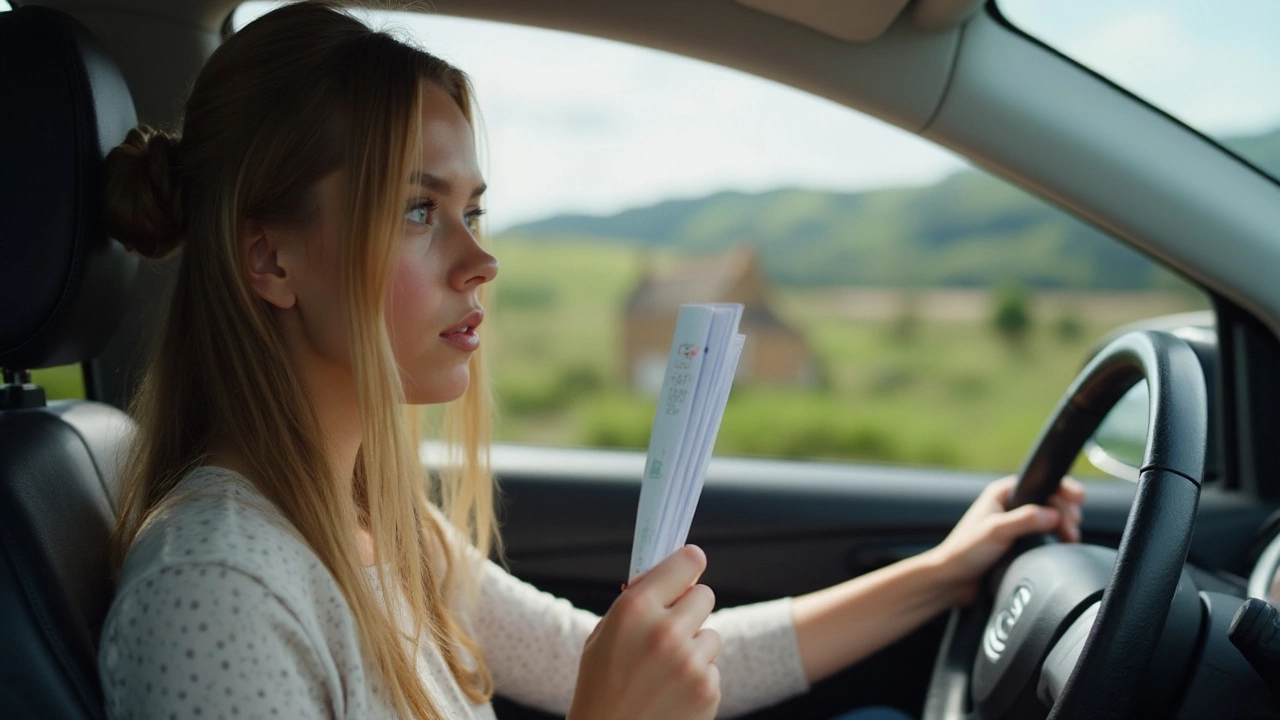Beginner Driver Guide – Essential Tips and Simple Tricks
Just got your provisional licence? Congrats! It’s normal to feel a mix of excitement and nerves. This guide gives you straight‑forward advice you can use right now to drive with confidence and stay safe.
Start with the Basics – What Every New Driver Needs
Before you hit the road, make sure you know the core controls: steering, clutch (if you have a manual), brake, accelerator, and gear shift. Spend a few minutes each day just sitting in the driver’s seat, turning the wheel, and feeling how the pedals respond. This simple habit builds muscle memory so you won’t overthink each move when traffic gets heavy.
Next, practice the essential manoeuvres in a quiet car park: parallel park, three‑point turn, and reversing into a space. Do each one at least three times. If you mess up, that’s fine – you’re learning. The goal is to finish each manoeuvre without panicking, not to be perfect on the first try.
Beat Driving Anxiety with Small Wins
Feeling anxious is common. The trick is to break every drive into bite‑size tasks. For example, set a goal to drive for five minutes on a quiet road, then another five minutes on a slightly busier street. Celebrate each completed segment; it reinforces confidence.
Use a simple check‑list before every drive: seat adjusted, mirrors set, hands at 9 & 3 o’clock, and a quick glance at the speed limit. This routine calms the mind and makes you feel in control.
If you notice your heart racing, try the "5‑4‑3‑2‑1" grounding technique: name five things you see, four things you hear, three things you feel, two things you smell, and one thing you taste. It pulls your focus away from fear and back to the road.
Nutrition also helps. Eat a balanced snack like a banana or a handful of nuts before you drive. Stable blood sugar keeps your energy steady, which reduces jitters.
Preparing for Your Theory and Practical Tests
Most beginner drivers stumble on the theory test because they try to memorize every rule. Instead, work through practice questions and note the patterns – you’ll see certain topics repeat. Set a timer for 15 minutes, answer as many questions as you can, then review wrong answers. Do this three times a week and you’ll notice a big jump in confidence.
For the practical test, focus on the most common fault areas: observation at junctions, smooth braking, and correct positioning. Ask your instructor to run a mock test and record it. Watching the video helps you spot small habits you might miss while driving.
On test day, arrive early, do a quick walk‑around of the car, and take a few deep breaths. Remember, the examiner wants you to be safe, not perfect. Stay relaxed, follow the steps you practiced, and you’ll be far more likely to pass.
Finally, keep a driving journal. Jot down what went well, what felt tricky, and what you’ll practice next. Over time you’ll see clear progress, and that record becomes a powerful confidence booster.
Driving is a skill you improve with every mile. Use these simple steps, stay patient, and enjoy the freedom that comes with being a competent driver.
- January 26 2025
- 0 Comments
- Rowan Cavendish
A Beginner's Guide to Learning to Drive Safely and Effectively
Learning to drive can be an exciting yet daunting experience for beginners. With the right approach and mindset, you'll gain confidence on the road in no time. This guide covers everything from understanding traffic rules to mastering basic car controls. It also offers advice on overcoming nerves and preparing for the driving test.
- Driving Lessons (41)
- HGV Training (31)
- Driving Test Tips (31)
- Driving Test Booking (26)
- Driving Licence Renewal (23)
- Driving Theory Test (21)
- Pass Plus Course (15)
- Driving Tips (15)
- Intensive Driving Course (15)
- Driver Licensing (14)
Categories
- December 2025 (12)
- November 2025 (13)
- October 2025 (21)
- September 2025 (5)
- August 2025 (8)
- July 2025 (30)
- June 2025 (30)
- May 2025 (30)
- April 2025 (31)
- March 2025 (30)
- February 2025 (28)
- January 2025 (34)
Archives
- driving lessons
- driving test
- driving tips
- intensive driving course
- driving test tips
- HGV training
- learn to drive
- driving theory test
- driver training
- driving test booking
- pass driving test
- HGV driving
- road safety
- driving license renewal
- Virginia driving test
- learner drivers
- safe driving
- Virginia driver's license
- driving license
- learning to drive

